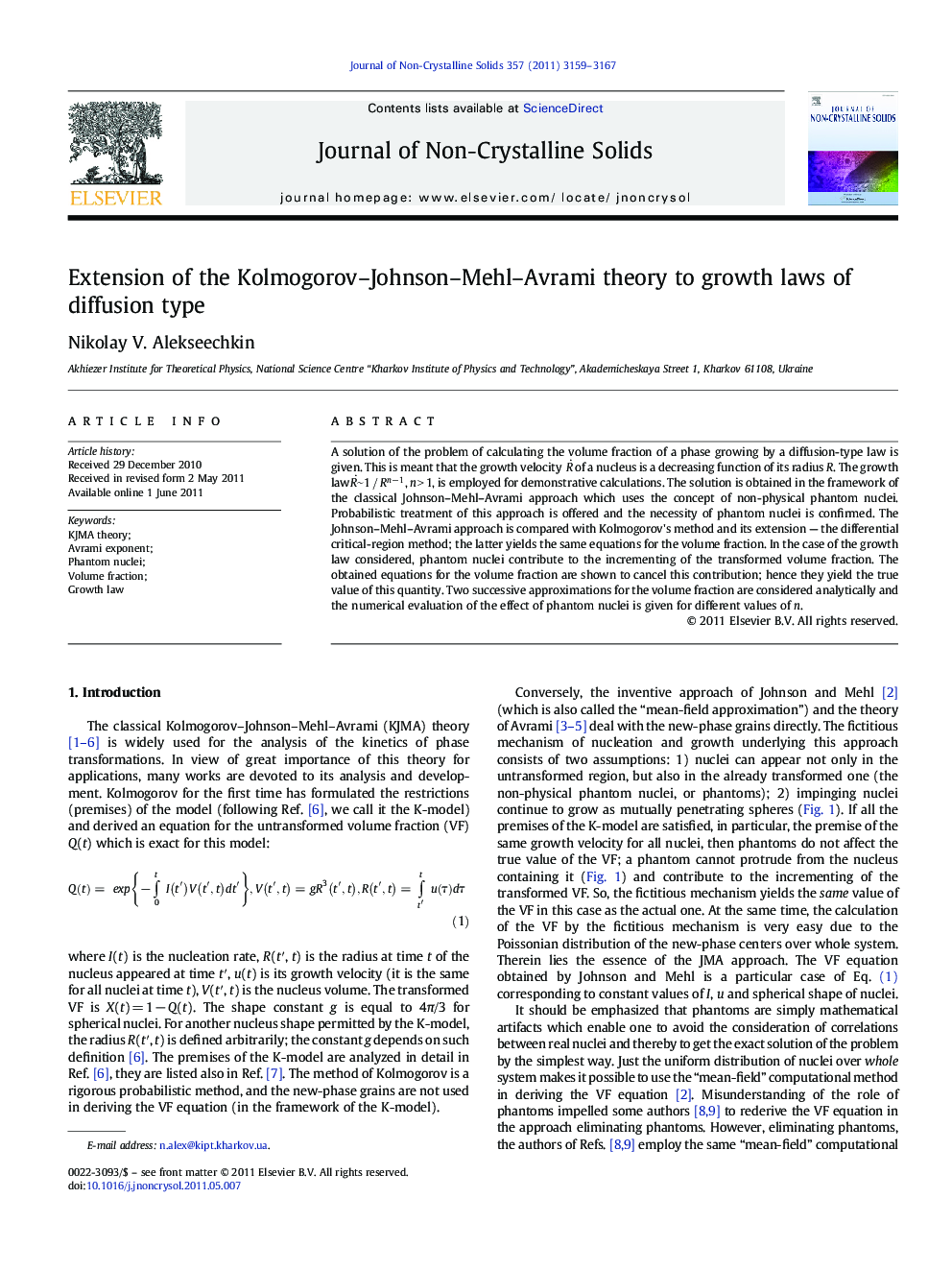| کد مقاله | کد نشریه | سال انتشار | مقاله انگلیسی | نسخه تمام متن |
|---|---|---|---|---|
| 1482526 | 1510483 | 2011 | 9 صفحه PDF | دانلود رایگان |

A solution of the problem of calculating the volume fraction of a phase growing by a diffusion-type law is given. This is meant that the growth velocity R˙ of a nucleus is a decreasing function of its radius R . The growth law R˙~1/Rn−1, n > 1, is employed for demonstrative calculations. The solution is obtained in the framework of the classical Johnson–Mehl–Avrami approach which uses the concept of non-physical phantom nuclei. Probabilistic treatment of this approach is offered and the necessity of phantom nuclei is confirmed. The Johnson–Mehl–Avrami approach is compared with Kolmogorov's method and its extension — the differential critical-region method; the latter yields the same equations for the volume fraction. In the case of the growth law considered, phantom nuclei contribute to the incrementing of the transformed volume fraction. The obtained equations for the volume fraction are shown to cancel this contribution; hence they yield the true value of this quantity. Two successive approximations for the volume fraction are considered analytically and the numerical evaluation of the effect of phantom nuclei is given for different values of n.
Research Highlights
► Probabilistic treatment of the Johnson-Mehl-Avrami approach is offered.
► Volume-fraction equations for a phase growing by a diffusion-type law are derived.
► Contribution of phantom nuclei to the transformed volume fraction is evaluated.
Journal: Journal of Non-Crystalline Solids - Volume 357, Issues 16–17, August 2011, Pages 3159–3167